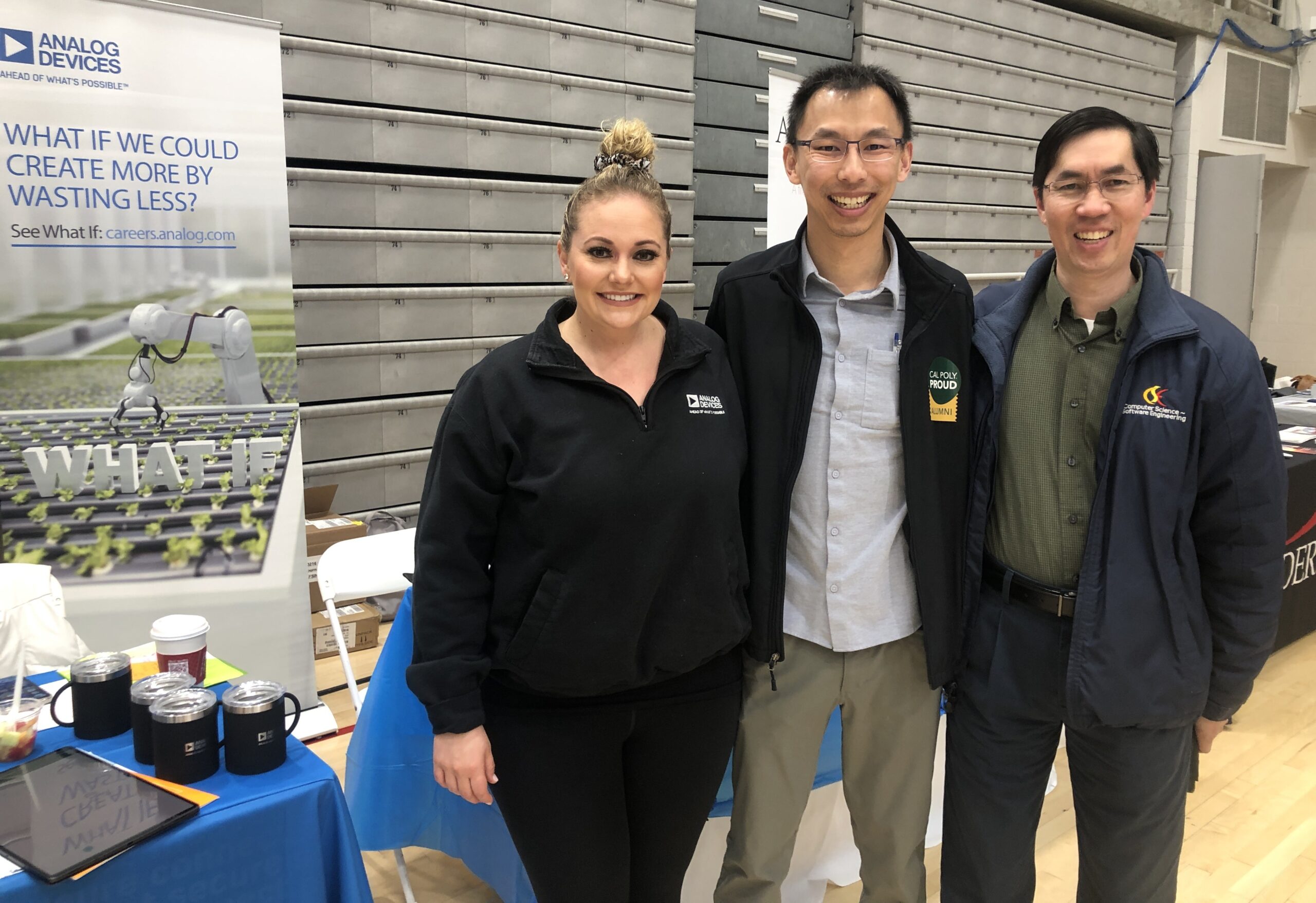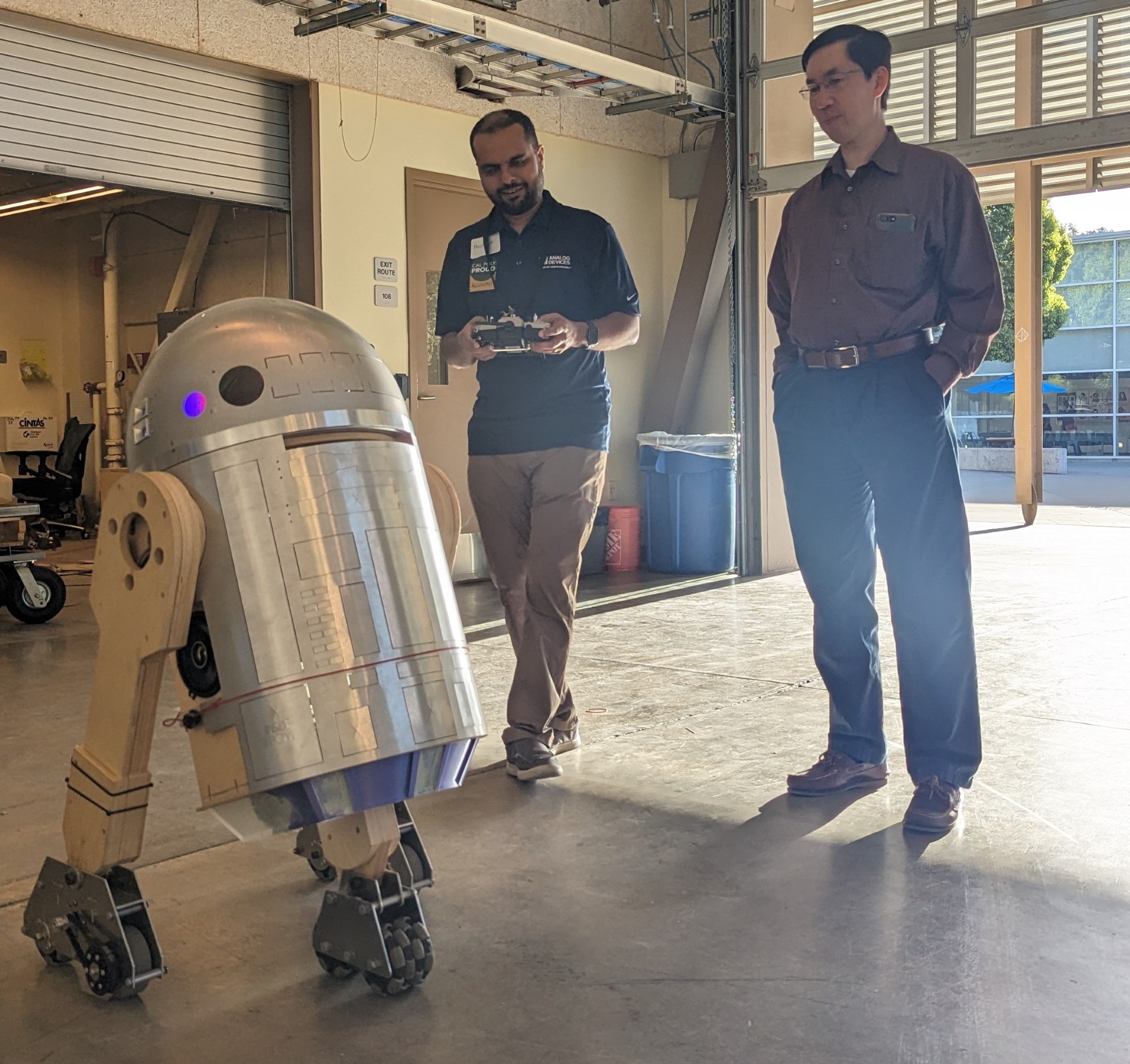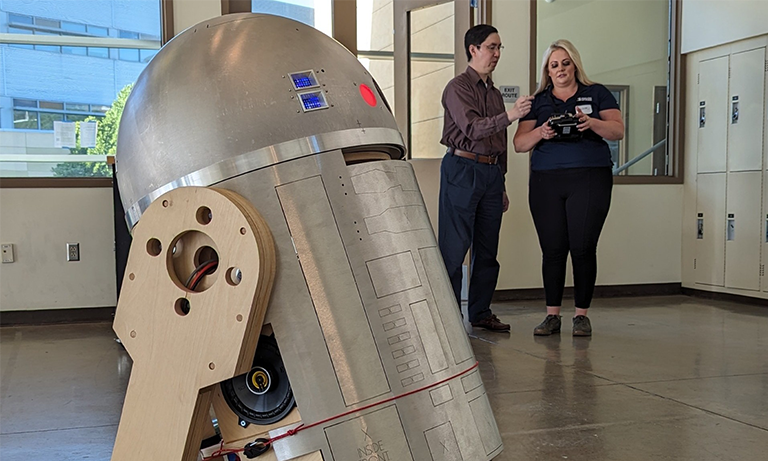Analog Devices, a leading semiconductor technology company, has partnered with Cal Poly to support the university’s Robotics Club in developing Pascal – a droid inspired by the iconic R2-D2 from “Star Wars.”
This collaboration underscores the importance of industry-academic partnerships in fostering innovation and hands-on learning in robotics and electronics.
“We want to help students excel,” said Aaron Lee, business development for Analog Devices’ consumer business unit and 2008 Cal Poly industrial engineering graduate. “This partnership is an educational journey that will equip students with the skills and knowledge needed to thrive in the fast-evolving field of robotics.”
Analog Devices has donated both financial resources and essential components, including EVKits and samples, which have been instrumental in providing students with access to innovative technology and materials crucial for the robot’s development.

Pascal, or R4-PAS, launched by Professor John Seng to reinvigorate the club post-COVID, aims to reimagine R2-D2 as an autonomous droid built to the exact specifications of the movie version. Seng teaches in the Computer Science and Computer Engineering departments.
A key feature of Pascal is its advanced battery management system, powered by Analog Devices’ PowerPath controller and MOSFET switch driver. These components enable the robot to use multiple charging sources, extend battery life and efficiently switch between different DC power sources, ensuring quick and effective delivery of high-voltage power from its batteries to the motor.
During the fall career fair on campus, Seng demonstrated Pascal to representatives from Analog Devices, garnering significant interest and enthusiasm. Cal Poly has a strong presence within the global company, with over 40 alumni working across California alone.
“Industry partnerships are important because it gives internships and job opportunities to our students and also allows Cal Poly alumni to interact with our projects,” Seng said.
He noted that computer engineering student Ethan Robin will be interning at Analog Devices this summer after designing Pascal’s power supply board, which includes donated chips from Analog Devices.
This collaboration underscores the vital role of industry support in education, bridging the gap between theoretical learning and practical application. The development of Pascal exemplifies how such partnerships can enhance educational outcomes and inspire the next generation of engineers and innovators.
“Cal Poly not only provides students with a strong technical foundation but also fosters industry relationships throughout their careers, developing them into well-rounded individuals, not just engineers,” Lee said.
By Emily Slater



